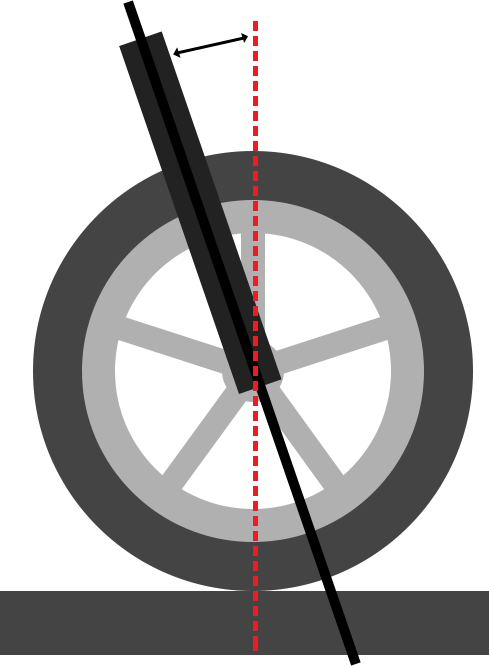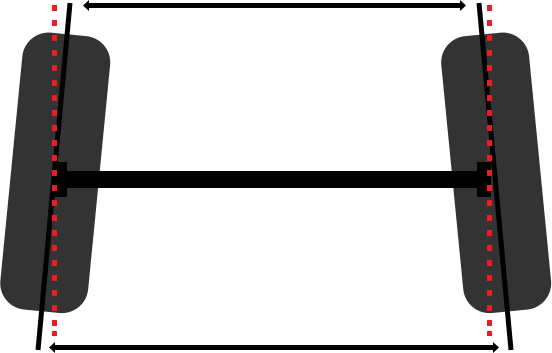WHEEL ALIGNMENT
We often hear the term wheel alignment or wheel tracking used – but what does this actually mean? And what causes bad wheel alignment? Find out all you need to know about tracking alignment, including how to book your free wheel alignment check, from our helpful guide.
The charge is to inspect and measure the vehicle's main geometry, with adjustments to standard toe included in the price. Should any additional adjustments be required further charges will apply. Not all vehicles are adjustable – please call your local branch for more information if required.
What is wheel alignment?
Wheel alignment (or wheel tracking) describes the position and angle of your wheels. So wheel alignment checks are crucial to assess whether your wheels are at the optimal angle and direction for your vehicle.
The correct position for your wheels is pre-determined by the vehicle manufacturer - your wheels are then adjusted to meet these exact specifications during the manufacturing process.
When aligned correctly, you can enjoy improved handling, longer-lasting tyres and an overall enhanced driving experience. However, left unchecked, poor wheel alignment can compromise the safety and longevity of your tyres.
Why is tracking alignment important?
Wheel alignment is important because it directly impacts your vehicle's safety and efficiency.
From a safety perspective, uneven tyre treads can reduce your vehicle's grip on the road - especially in adverse weather conditions. Not only does this affect your handling, but in some extreme cases, uneven tyre wear can lead to blowouts.
From a financial standpoint, misaligned tyres cause your vehicle to drag against the road, reducing fuel efficiency and forcing you to change your tyres more frequently.
How to identify signs of wheel misalignment?
Fortunately, wheel misalignment is quite easy to identify. If you notice any of the following signs, you should get your wheel tracking checked by a tyre specialist:
Pulls to the side - your vehicle pulls to the side when travelling in a straight line
Uneven tyre wear - your tyres are wearing unevenly or more rapidly than usual
Steering wheel - your steering wheel vibrates or remains at an angle when you are driving in a straight line
Squeaking noises - your tyres are squealing or squeaking, even when driving at a low speed
Whether your vehicle suffers from these symptoms or not, as a general rule, your wheel tracking should be checked every 12,000 – 15,000 miles, including additional checks when you have any work carried out to your steering, suspension, wheels or tyres.
What causes bad wheel alignment?
Your wheel alignment can be affected by impact caused by minor driving occurrences, such as:
Driving over potholes
Hitting kerbs
Minor collisions
It can also be affected by a worn or ill-adjusted suspension system and any maintenance performed on the wheels, tyres or suspension.
How is wheel alignment measured?
Checking and correcting wheel alignment is a relatively simple and affordable task. The process consists of checking and adjusting the angles of your wheels to ensure that they face the geometrically precise direction. The angles by which wheel alignment is measured include:

Caster
The caster is the angle created by the steering pivots from the front to the back of the vehicle. This angle directly impacts the stability of the vehicle, meaning misalignment can result in difficulty controlling the car.
It’s important to note that any adjustments to the camber and castor (if required) will be charged separately.

Toe in and out
The toe measurement identifies which direction the wheels are pointing in relation to the centre of the vehicle and is defined as the difference in distance between the front of the tyres and the back of the tyres.

Camber
Camber is the vertical tilting of the wheels. As the camber angle controls how much of the wheel is in contact with the road, too great a difference between camber angles can cause the vehicle to pull to one side and may make tyres wear unevenly.
Again, any adjustments to the camber and castor (if required) will be charged separately.
With this said, not all vehicles can be adjusted due to their design or manufacture. So please don’t hesitate to discuss your vehicle’s unique specifications with our branch staff by contacting us via phone or email or visiting one of our local branches.
How long does an alignment check take?
As we mentioned previously, wheel tracking checks are relatively simple routine tasks. Therefore, it shouldn't take longer than an hour to perform a wheel alignment assessment.
Free Wheel Alignment Check
Now that you know what causes car wheel alignment to change, and can identify the signs of wheel misalignment, we recommend visiting your local Merityre Specialists branch for a free wheel alignment check. We will check your tracking wheel alignment and advise whether your vehicle needs any correction work carrying out.